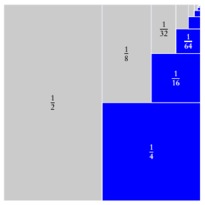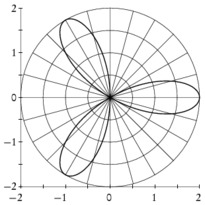En cliquant sur une imagette, vous accéderez au source et à l'image. En cliquant sur cette dernière, vous ouvrirez le fichier PDF associé.















/* -*-ePiX-*- */ /* shadeplot.xp -- February 09, 2003 */ #include "epix.h" using namespace ePiX; double k=4; // change width of hump double dx = 0.05; // width of thin shaded region double x = 1/sqrt(k); // position of thin shaded region double dy = 0.25; // for vertical distance between labels; kludgey double f(double t) { return sqrt(fabs(k)/(2*M_PI))*exp(-k*t*t); } P pt1 = P(x, f(x)+2*dy), pt2 = P(x+dx,f(x)+dy), pt3 = P(x+3*dx,f(x)); int main() { unitlength("1pt"); picture(150, 150); bounding_box(P(0,0), P(1,1)); offset(120, -320); begin(); fill(); gray(0.1); shadeplot(f, x_min, x, 90); gray(0.4); rect(P(x,f(x)), P(x+dx, 0)); gray(0.6); shadeplot(f, x, x+dx, 10); fill(false); arrow_camber(0.25); arrow_fill(1); arrow(pt1, P(0.5*(x_min+x), 0.5*f(0.5*(x_min+x))), P(0,0), "$F(x)=\\displaystyle\\int_a^x f(t)\\,dt$", tr); arrow(pt2, P(x+0.5*dx, f(x)), P(0,0), "Area of rectangle = $f(x)\\,dx$", tr); arrow(pt3, P(x+dx, 0.5*f(x+dx)), P(0,0), "Area = $F(x+dx)-F(x)$", tr); bold(); plot(f, x_min, x_max, 120); plain(); h_axis(4); v_axis(4); label(P(x_min,0), P(0,-5), "$a$", b); label(P(x,0), P(0,-5), "$x$", b); label(P(x+dx,0), P(0,-2), "$x+dx$", br); end(); }







